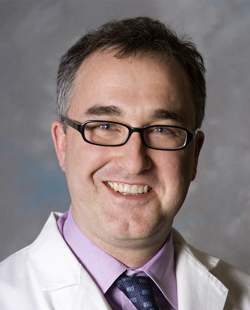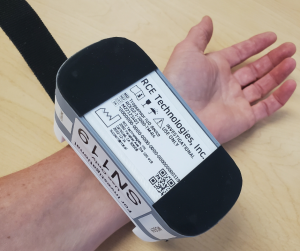

Study aims to find blocked vessels in cardiac-arrest patients
Emergency physicians and cardiologists at Harborview Medical Center in Seattle are studying whether a wristband sensor can quickly, reliably detect a heart-vessel blockage in people who arrive after experiencing an out-of-hospital cardiac arrest.
Cardiac arrest involves an electrical malfunction that causes an irregular heartbeat, after which the heart stops pumping. Some people who experience this event — after being resuscitated and brought to a hospital — are found to also have suffered a heart attack, caused by a blocked coronary artery.
Identifying such a potential blockage quickly is crucial so those patients can be stabilized and undergo a procedure to clear the blockage.
To diagnose a blockage, physicians traditionally place electrodes on the chest to record the heart’s electrical signals (electrocardiogram), but this screening can lack accuracy among people who have experienced a cardiac arrest. In another approach, blood is drawn to measure troponin, a protein that a damaged heart muscle releases into the bloodstream. But in busy hospitals, it can take hours to get lab results of blood test.
The novel wristband sensor being studied is designed to detect high troponin levels within three to five minutes of application, said Dr. Graham Nichol, an emergency physician at the University of Washington School of Medicine and director of Harborview’s Center for Prehospital Emergency Care. He is supervising the proof-of-concept test of the device, Tropsensor, manufactured by RCE Technologies of Carlsbad, Calif.
“Early recognition of acute coronary occlusion could allow us to rapidly restore blood flow to the heart, which improves the short- and long-term outcomes for patients who have unrecognized heart attacks,” Nichol said.
He added that the device could also be used with people who arrive at the Emergency Department reporting chest pain.
The study will involve 30 patients, whose outcomes will be studied over time, Nichol said. He expects to report findings in 2024.
It is not feasible to obtain a patient’s consent during this emergency care period, and the University of Washington Institutional Review Board has approved a waiver of consent for this study.